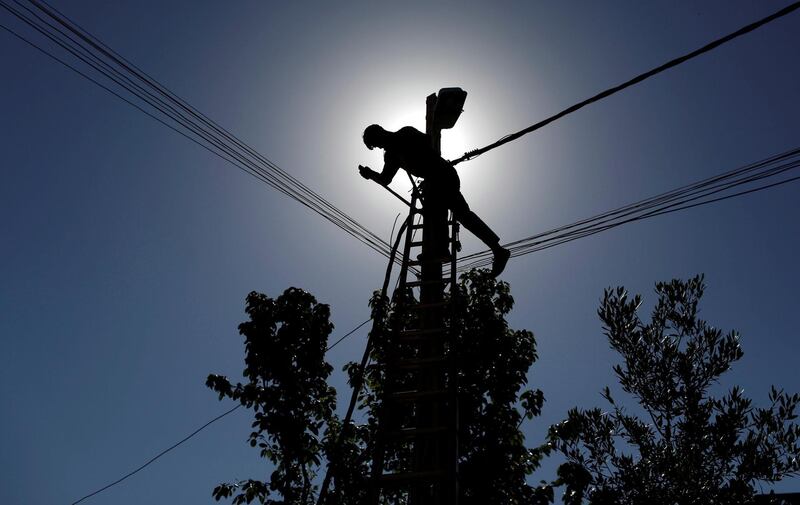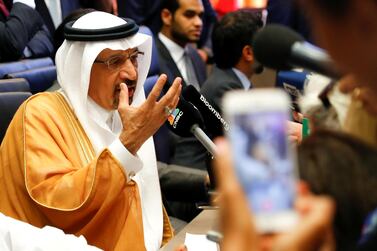At the Powering Iraq conference in Baghdad last week, the lights went out three times as assembled luminaries discussed rebuilding the country’s electricity system.
The interruptions were a reminder of the daunting task. But electricity minister Luay Al Khatteeb, appointed in October, is beginning to make progress.
The electricity sector never really recovered from the damage it suffered in the First Gulf War, the 1990s sanctions, chaos and looting in the wake of the US assault in 2003, and botched reconstruction. Power generation did not reach the pre-invasion level until 2008. Only from 2012 onwards did it really start growing quickly, and then was set back by the disastrous irruption of Isis which destroyed much of the northern infrastructure.
Meanwhile, Iraq’s population adds more than a million people every year, and there is growing demand for air-conditioning in the searing summers, for television, and to power the crowded new malls popping up around a reviving Baghdad. With electricity available for perhaps 12 to 16 hours per day, even rapid progress in adding new generation is barely closing the gap.
With about 30 gigawatts of plants theoretically in existence, “federal” Iraq (excluding the autonomous Kurdistan region) cranked out about 15 GW at best last year. Repair efforts have increased that this year to about 18 GW.
Iraqis bridge the gap with small neighbourhood diesel generators, which are expensive, noisy and dirty. Despite heavy subsidies on state-provided power – and many consumers not settling their bills or using illegal connections – a household pays three or four times as much as they would in the UAE, for worse service. These generators are usually not powerful enough to run air-conditioning, although costly new systems that can manage are becoming popular.
The creaking transmission and distribution system loses some 40 per cent of the power generated. The lack of reliable electricity is a severe obstacle to diversifying the economy beyond the petroleum sector.
Oil production has been rising steadily, and new projects are set to bring further gains, if Iraq can go beyond its current Opec target. Along with the oil comes the by-product, associated gas. Much of this is burnt off because of a lack of facilities to gather and treat it, costing the country at least $5 billion (Dh 18bn) per year, according to German industrial giant Siemens.
Gas capture and use has been rising, led by the Basrah Gas Company, a Shell-Mitsubishi joint venture, but growth in output has continued to outstrip it, ranking Iraq behind only Russia as the world’s second-largest flarer of unwanted gas. A brown smog from the flames hangs over Basra, the heart of the Iraqi oil industry.
The woes of unemployment, neglect, power cuts and insufficient, polluted water brought Basrawis out in protest last summer, and contributed to prime minister Haider Al Abadi’s failure to win a second term.
These problems were worsened by a cut-off of gas and electricity supplies from Iran, ostensibly over unpaid bills though Iran was itself suffering from drought and power shortages. The US has pressed Baghdad to end its dependence on energy from its neighbour, though so far it has granted short-term waivers on sanctions.
Fixing the sector is tricky: the electricity ministry must coordinate with the ministry of oil to secure fuel, and with itself to match generation with the capacity to distribute power to the right places. Electricity projects have long been dogged by real corruption, politically motivated accusations of corruption, and bureaucracy. Now external political pressures add another hurdle.
The ministry must raise tariffs and enforce payment so it can cover its costs and curb rampant demand growth. But populist politicians, and citizens angry about poor service, resist price increases. A financially unsustainable electricity sector cannot pay investors directly, but has instead to rely on government guarantees, adding to the country’s debt load.
Yet among all these problems, there are some signs of progress. Siemens, whose CEO Joe Kaeser addressed the conference, solved Egypt’s power cuts with the rapid installation of new generation in 2017. Though it has found the process to be slower in Iraq, but Siemens, GE, Japan’s Mitsubishi Hitachi, and local firm Mass Global, are improving power supply. The grid is due to be connected to Jordan’s by 2021, with talks on links with Kuwait and Saudi Arabia also underway. The autonomous Kurdistan region could also send some of its large gas resources to federal Iraq.
The ministry of electricity has sought interest for 755 megawatts of solar power across various sites, which would be the country’s first large-scale solar installation. Solar power has attractively low costs, can be installed quickly, does not depend on unreliable fuel deliveries, and can be located close to communities to bypass grid constraints.
Iraq can draw on valuable lessons from regional neighbours. The country needs to get the investment model right and build up its ambitions steadily from smaller pilot projects to larger solar farms, like those achieved in the UAE, Jordan and Egypt. Private investment in rooftop panels could be encouraged by reforming end-user tariffs and allowing users to feed electrons back to the grid.
Rising temperatures, a lack of water and unreliable electricity have repeatedly exacerbated Iraqi anger and political and economic dysfunction. Now, as violence ebbs, the government can get to grips with the country’s practical problems. Patience has to go hand in hand with tangible progress over the next decade, to keep the lights on for good.
Robin M. Mills is CEO of Qamar Energy, and author of The Myth of the Oil Crisis







